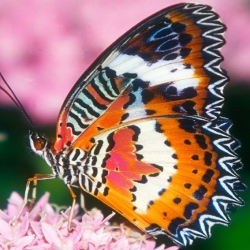
The previously oldest known flowering plant-like pollen dates from the Early Cretaceous period. But the team described six types of fossil pollen grains from older Middle Triassic core samples that closely resemble these earliest examples.
The research is published in the journal Frontiers in Plant Science. Flowering plants – also known as angiosperms – are the most numerous and diverse group of seed-producing plants on land.
All seed-producing plants make pollen, with each grain enclosing the developing male cell used in sexual reproduction.
"That’s why plants developed a very tough and resistant wall of organic matter to protect them," explained Professor Peter Hochuli from the University of Zurich, Switzerland.
"In the fossil record we find only this protective wall of the pollen grains."
Based on the increase in abundance and diversity of flowering plants during the Early Cretaceous – approximately 140 million years ago – it has been assumed that they originated in this period.
In the older Triassic samples, Prof Hochuli and his team used confocal laser scanning microscopy to obtain high resolution, three-dimensional images and identified six distinct types of fossilised flowering plant-like pollen based on size, patterning and structure.
"With a few differences…the pollen from the Middle Triassic look exactly the same as the angiosperm pollen from the Early Cretaceous," explained Prof Hochuli.
